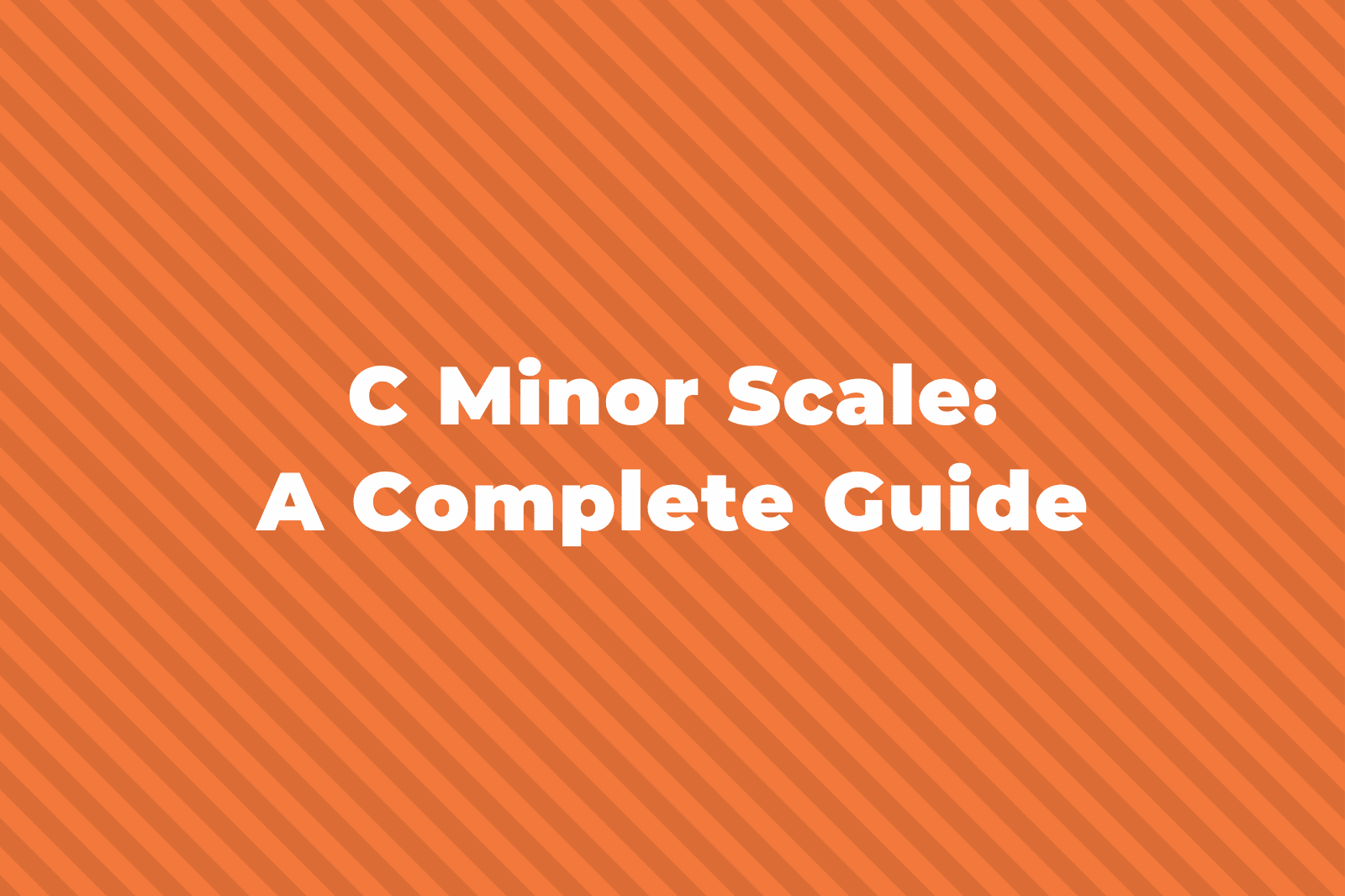There are various musical terms that help define texture. These refer to the number of instruments or voices there are in a given piece, and how they relate to each other. The simplest of these is a monophonic texture, otherwise known as monophony.
In this article, we’ll take a look at different monophonic songs and pieces that utilize monophony from across the history of Western music, from medieval plainchant to contemporary classical music, via pop, jazz, and folk song, with a YouTube link for each example. Let’s get started.
Quick Recap: What is Monophonic Texture?
To understand what Monophony is, it helps to understand the etymology of the word.
In Greek, ‘mono’ means ‘one’, while ‘phonic’ means ‘sound’.
Therefore, a piece can be said to have a monophonic texture when we hear a single, unaccompanied melody line: a single sound.
In its simplest form, this is played or sung by a solo instrument or voice.
However, pieces that are played or sung by multiple musicians in unison are also considered monophonic, as are pieces with two parts that are played or sung at a fixed interval – a fifth or an octave, for example.
For a more detailed look at this topic, you can read our article on what is monophonic texture in music here.
1. Gregorian Chant – Circumdederunt Me
The roots of Western classical music lie in the Medieval era, which stretched all the way from 500 to 1400AD.
It was during this period that music was first notated and that the first, primitive rules of harmony began to be established.
The best-known style of music from the Medieval period is Gregorian chant, or plainchant, in which monks would sing religious texts as part of the Roman Catholic Mass.
The video above is a classic example of a Gregorian chant, sung in unison by the male voices of the Gregorian Choir of Paris.
2. Comtessa Beatriz de Dia – A Chantar
The later Middle Ages – roughly between 1100-1350 – saw the emergence of troubadours.
These solo performers and composers were the singer-songwriters of their day, writing lyric poetry that was then set to music, and which explored themes of chivalry and “courtly love”. Much of this music was monophonic in nature.
Comtessa Beatriz de Dia was a famous trobairitz (as women troubadours were known) from southern France, who wrote many romantic-themed poems and songs.
In her piece “A Chantar”, a monophonic melody is sung above a low-pitched drone.
3. J.S. Bach – Partita in E Major for Solo Violin
The Baroque period, which lasted from 1600-1750, is perhaps most famous for its polyphonic music: the interweaving contrapuntal lines of a Scarlatti harpsichord sonata, for example, or the rich textures of a Handel chorus.
However, Johann Sebastian Bach – arguably the era’s greatest composer – wrote a number of beautiful works for unaccompanied single-line instruments.
His Cello Suites are probably the best-known examples of these, but he also wrote a number of partitas for various instruments including solo flute and solo violin.
In this violin partita he manages to create an incredible amount of harmonic and melodic interest via intricate single lines, despite the lack of any accompanying instruments:
4. Folk Song – Bushes and Briars
Folk music generally does not have a known composer, and it tends not to be written down in any sort of formal way.
Instead, it develops organically and is passed from person to person, and even from one generation to the next, aurally.
It may also have a strong sense of national identity, meaning that we get folk music that is highly typical of its native country: Spanish folk music sounds very different from Eastern European folk music, for example.
Folk songs might be accompanied by a chordal instrument, such as guitar or lute, or sung without accompaniment, in which case they will have a monophonic texture.
In the film Far From the Madding Crowd, the actor Julie Christie sings the classic English folk song “Bushes and Briars”, with her solo voice joined in unison on occasion by a wooden flute.
5. Football Chant – Pompey Chimes
We tend not to think of them in such academic terms, but the chants that are sung by fans at football matches, with supporters attempting to spur on their own team or mock the opposition, are often cited as some of the few remaining examples of modern-day folk music.
The music is not written down, with words often put to existing tunes, and they tend to be passed on aurally between groups of fans, who of course tend not to be trained musicians.
Because they are generally sung in unison and without instrumental accompaniment, football chants almost always have a monophonic texture.
“Pompey Chimes”, which is sung by supporters of Portsmouth Football Club, is one of the UK’s oldest football chants.
6. Ludwig van Beethoven – Fifth Symphony
Orchestral music, particularly in the Romantic era, is noted for its large ensembles and rich textures.
However, Ludwig van Beethoven’s Fifth Symphony, one of the most famous orchestral pieces of all time, begins with a monophonic texture, as that iconic opening motif is played by the strings in unison.
After just a few seconds we start to hear more complex textures, as we’d expect in a piece like this, but fleeting moments of monophony can be heard throughout the piece as that famous phrase is returned to and manipulated.
We would never hear an entirely monophonic orchestral piece, but it is not uncommon for composers to use sparse textures like this sparingly, in order to provide a striking contrast with richer palettes and instrumentation elsewhere.
7. Luciano Berio – Sequenza V
After the grand, maximalist music that characterized the Romantic period, a number of composers challenged themselves to write for smaller, unusual instrumental groups as experimentalism took hold during the 20th Century.
The Italian composer Luciano Berio wrote a series of fourteen “sequenzas” for various solo instruments, many of which are highly challenging for the performer, calling for all sorts of unusual extended techniques.
The fifth of these sequenzas is written for trombone.
Here it is interpreted in striking fashion by Swedish contemporary music special Christian Lindberg, with a strong visual element to the performance.
8. Sonny Rollins – It Could Happen To You
Most jazz is homophonic, in that it generally features a lead melody line – a soloing trumpet or saxophone, for example – with a chordal accompaniment.
Some jazz also features elements of polyphony.
In New Orleans jazz, for instance, we might hear a trumpet, a clarinet, and a trombone improvising simultaneously.
However, there are some rarer examples of monophony in jazz.
Since wind instruments such as saxophone and trumpet are only capable of playing one note at a time, we of course hear a monophonic texture when players of those instruments set themselves the challenge of playing without accompaniment.
The tenor saxophonist Sonny Rollins recorded one such unaccompanied track on his 1957 album The Sound of Sonny.
He plays a loose, rubato interpretation of Jimmy van Heusen’s “It Could Happen To You”, before an extended improvisation and an approximate return to the melody to finish.
9. Stevie Wonder – Sir Duke
“Sir Duke” opens with a brilliantly catchy monophonic introduction, with multiple instruments playing a rising, arpeggio-based figure in unison.
The song, from Stevie Wonder’s classic 1976 album Songs in the Key of Life, then takes on a more traditional pop texture, with vocals backed by a funky rhythm section.
Monophony makes a return, however, with an intricate unison “soli” section between verses.
10. Whitney Houston – I Will Always Love You
Like a number of pieces on this list, Whitney Houston’s cover of Dolly Parton’s epic song of devotion begins with a monophonic introduction before this makes way for a fuller texture.
In this instance, the solo vocal intro sets the scene for the song’s yearning lyrical content in dramatic fashion, as well as showcasing Houston’s incredibly powerful voice.
11. Meredith Monk – Night Song
The composer and multi-discipline artist Meredith Monk has utilized monophony on a number of her own recordings.
Her ECM album Book of Days, for example, features a number of atmospheric single-line vocal pieces.
Here, her piece Night Song is played by the pianist Harry Huff.
This is particularly striking because, given the instrument’s chordal capabilities, it is rare to hear entirely monophonic piano pieces:
12. Tori Amos – Me and a Gun
Singer-songwriter Tori Amos opted for an entirely monophonic texture on “Me and a Gun”, the lead single from her 1991 debut album Little Earthquakes.
In this instance, the deliberate choice not to utilize any instrumental accompaniment makes the song’s lyrical content all the more powerful, with the song recounting a traumatic incident from Amos’ past:
Summary
We hope you’ve enjoyed reading our list of examples of pieces of music that make use of a monophonic texture.
We’ve covered a huge stylistic range, from some of the very earliest Western vocal music to instrumental Baroque pieces, classic pop, folk, 1950s jazz, weird and wonderful contemporary classical music, and even football chants.
We hope that you will now be able to listen out for even more examples of monophony as you listen to music on your own.



